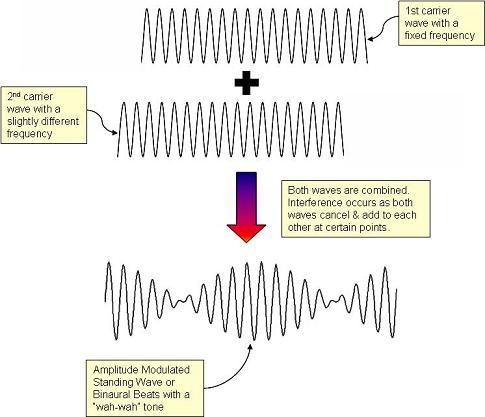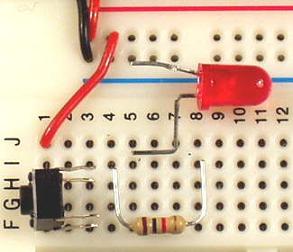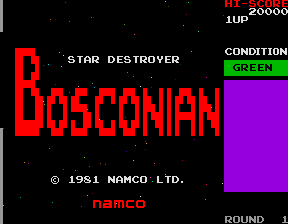
Nuovo archivio rar contenente 5 file audio binaurali formato wav aggiunto nell’album binaural
I file contenuti nell’archivio devono essere ascoltati in cuffia con un editor audio o altro software che consenta di "loopare" e/o estendere la durata dei suoni (WaveLab, Sound Forge o simile).
È possibile sperimentare l’effetto delle varie frequenze.
Nell’articolo seguente troverete una lista delle frequenze delle onde cerebrali con la descrizione dei vari stati di coscienza associati alle varie tipologie di onda, e una descrizione dell’ascolto binaurale o biauricolare oltre a un testo sul fenomeno della risonanza osservato da Christiaan Huygens nel 1665.
THX

binaural wav.rar
488 KB

ritratto di Christiaan Huygens
Le onde cerebrali
Nel corso della nostra vita quotidiana tutti noi sperimentiamo diversi "stati di coscienza". Per esempio, nell’arco di una giornata, tra la luce del mattino e il buio della notte, ci muoviamo da uno stato ordinario di veglia ai diversi stadi del sonno.
Ma anche gli stati di coscienza "straordinari" fanno parte della nostra comune esperienza: quando ci sentiamo particolarmente "creativi", insolitamente "intuitivi", eccezionalmente "lucidi", profondamente "rilassati".
Ordinari, o straordinari che siano, tutti gli stadi della nostra coscienza sono dovuti all’incessante attivita’ elettrochimica del cervello, che si manifesta attraverso "onde elettromagnetiche": le onde cerebrali, appunto.
La frequenza di tali onde, calcolata in ‘cicli al secondo’, o Hertz (Hz), varia a seconda del tipo di attivita’ in cui il cervello e’ impegnato e puo’ essere misurata con apparecchi elettronici. Gli scienziati suddividono comunemente le onde in "quattro bande", che corrispondono a quattro fasce di frequenza e che riflettono le diverse "attivita’ del cervello".
Onde delta
Hanno una frequenza tra 0,5 e 4 Hz e sono associate al piu’ profondo rilassamento psicofisico. Le onde cerebrali a minore frequenza sono quelle proprie della mente inconscia, del sonno senza sogni, dell’abbandono totale. In questo senso vengono prodotte durante i processi inconsci di autogenerazione e di autoguarigione.
Onde theta
La loro frequenza e’ tra i 4 ed i 8 Hz e sono proprie della mente impegnata in attivita’ di immaginazione, visualizzazione, ispirazione creativa. Tendono ad essere prodotte durante la meditazione profonda. Il sogno ad occhi aperti, la fase REM del sonno (cioe’, quando si sogna). Nelle attivita’ di veglia le onde theta sono il segno di una conoscenza intuitiva e di una capacita’ immaginativa radicata nel profondo. Genericamente vengono associate alla creativita’ e alle attitudini artistiche.
Onde alfa
Hanno una frequenza che varia da 8 a 14 Hz e sono associate a uno stato di coscienza vigile, ma rilassata. La mente, calma e ricettiva, è concentrata sulla soluzione di problemi esterni, o sul raggiungimento di uno stato meditativo leggero. Le onde alfa dominano nei momenti introspettivi, o in quelli in cui più acuta è la concentrazione per raggiungere un obiettivo preciso. Sono tipiche, per esempio, dell’attività cerebrale di chi è impegnato in una seduta di meditazione, yoga, taiji.
Onde beta
Hanno una frequenza che varia da 14 a 30 Hz e sono associate alle normali attivita’ di veglia, quando siamo concentrati sugli stimoli esterni. Le onde beta sono infatti alla base delle nostre fondamentali attivita’ di sopravvivenza, di ordinamento, di selezione e valutazione degli stimoli che provengono dal mondo che ci circonda. Per esempio, leggendo queste righe il vostro cervello sta producendo onde beta. Esse, poi, ci permettono la reazione più veloce e l’esecuzione rapida di azioni. Nei momenti di stress o di ansia le beta ci danno la possibilita’ di tenere sotto controllo la situazione e dare veloce soluzione ai problemi.
Il fenomeno della risonanza
Nel 1665 il fisico e matematico
olandese Christiaan Huygens, tra i primi a postulare la teoria
ondulatoria della luce, osservo’ che, disponendo a fianco e sulla
stessa parete due pendoli, questi tendevano a sintonizzare il proprio
movimento oscillatorio, quasi "volessero assumere lo stesso ritmo". Dai
suoi studi deriva quel fenomeno che oggi chiamiamo ‘risonanza’. Nel
caso dei due pendoli, si dice che uno fa risuonare l’altro alla propria
frequenza. Allo stesso modo e per lo stesso principio, se si percuote
un diapason, che produce onde alla frequenza fissa di 440 Hz, e lo si
pone vicino a un secondo diapason ‘silenzioso’, dopo un breve
intervallo quest’ultimo comincia anch’esso a vibrare. La risonanza puo’
essere utilizzata anche nel caso delle onde cerebrali. Studi che si
sono
serviti dell’elettroencefalogramma hanno mostrato un’
evidente correlazione tra lo stimolo che proviene dall’esterno e le
onde cerebrali del soggetto in esame. Inizialmente, le ricerche in
questo campo utilizzavano soprattutto la luce; poi, si e’ passati ai
suoni ed alle stimolazioni elettromagnetiche. Cio’ che si e’ osservato
e’ che se il cervello e’ sottoposto a impulsi (visivi, sonori o
elettrici) di una certa frequenza, la sua naturale tendenza e’ quella
di sintonizzarsi. Il fenomeno e’ detto ‘risposta in frequenza’. Per
esempio, se l’attivita’ cerebrale di un soggetto e’ nella banda delle
onde beta (quindi, nello stato di veglia) e il soggetto viene
sottoposto per un certo periodo a uno stimolo di 10 Hz (onde alfa), il
suo cervello tende a modificare la sua attivita’ in direzione dello
stimolo ricevuto.
Il soggetto passa dunque ad uno stato di rilassamento proprio delle onde alfa.
I due emisferi cerebrali
Il cervello umano e’ suddiviso in due emisferi:
destro:
–
sintetico (comprende l’insieme delle parti), concreto, spaziale
(coglie le relazioni nello spazio), intuitivo (usa sensazioni e
immagini), analogico (usa le metafore), irrazionale, olistico
(percepisce le strutture di assieme), atemporale e non-verbale. E’ la
sede delle attivita’ creative, della fantasia.
sinistro:
–
analitico (comprende i dettagli), astratto (giunge all’interno,
partendo dal dettaglio), lineare (lavora in ordine sequenziale),
Logico, numerico, razionale, simbolico, temporale, verbale. E’ la sede
di tutte quelle attivita’ che coinvolgono il linguaggio, la scrittura,
il calcolo.
I due emisferi sono uniti da una lamina orizzontale
di fibre nervose, il cosiddetto "corpo calloso". Ogni emisfero ha
competenze proprie: l’occhio sinistro, l’orecchio sinistro e tutta la
parte sinistra del corpo sono connesse all’emisfero destro; l’occhio
destro, l’orecchio destro e tutta la parte destra del corpo sono
connesse all’emisfero sinistro.I due emisferi, poi, funzionano in modo
diverso; elaborano, cioe’, tutti i processi informativi, secondo
modalita’ distinte. Per come si e’ finora strutturata, la nostra
società da’ una maggiore rilevanza alle modalita’ di pensiero
dell’emisfero sinistro, tanto che fino a poco tempo fa i neurologi
definivano "minore" l’emisfero destro. Ma, una visione piu’ bilanciata
delle due componenti, un maggiore equilibrio tra le funzioni, una
armonia
tra razionalita’ e fantasia e’ ciò che, oggi, forse, l’umanita’ necessita con piu’ urgenza.
Uno
strumento semplice ed efficace per riequilibrare il potere dei due
emisferi cerebrali e’ il suono. Come abbiamo visto, ogni attivita’
cerebrale emette onde particolari, che possono entrare in risonanza con
le onde sonore esterne. In questo modo il cervello viene ‘veicolato’
attraverso il suono, stimolato a sintonizzarsi su una frequenza (e
quindi sull’attivita’ cerebrale che le corrisponde), portato a
funzionare come un insieme.
Il ritmo biauricolare
Le onde
cerebrali hanno una frequenza che l’orecchio umano non coglie. Ma,
l’avvento dell’elettronica e dell’informatica applicata al settore
musicale ha dato la possibilita’ di utilizzare tali frequenze,
veicolandole attraverso onde sonore particolari. Viene usata una
particolare tecnica, chiamata ritmo biauricolare o binaurale, che opera
in questo modo: se l’orecchio sinistro viene stimolato con un suono
portante alla frequenza, poniamo, di 500 Hz e l’orecchio destro con uno
a 510 Hz, la differenza di 10 Hz viene percepita dal cervello (e solo
dal cervello, perché è una frequenza che sta al di fuori dello spettro
sonoro).
Il cervello e’ cosi’ stimolato ad entrare in risonanza con
il ‘ritmo biauricolare’ di 10 Hz (onde alfa) e, di conseguenza, con
l’attività corrispondente: rilassamento, calma, tranquillità.
Il cervello
[…] Si può paragonare il cervello ad una stazione radio, trasmittente e ricevente.
Infatti, il cervello non è solo trasmittente, nel caso dell’immaginazione creativa e di cui si è già parlato; il cervello funge da ricevente, così come può ricevere gli stimoli di pensiero.
Quando viene stimolato, o sottoposto ad una alta dose di vibrazioni, il cervello diviene più pronto a ricevere il pensiero che gli proviene da sorgenti esterne: questo processo avviene attraverso le emozioni, positive o negative.
Attraverso le emozioni, quindi, si possono incrementare le vibrazioni del pensiero.
[…] Il
cervello umano ha un numero di collegamenti tra le varie sue cellule
equivalente al numero 1 (uno) seguito da 15 milioni di cifre.
E’ stato accertato che vi sono da 10 a 14 miliardi di cellule nervose nella corteccia cerebrale,
e sappiamo che queste sono disposte in un sistema che non è
assolutamente casuale; ma, sono ordinate in modo perfetto. […]
-tratto da una pagina web di cui non ricordo l’indirizzo-







